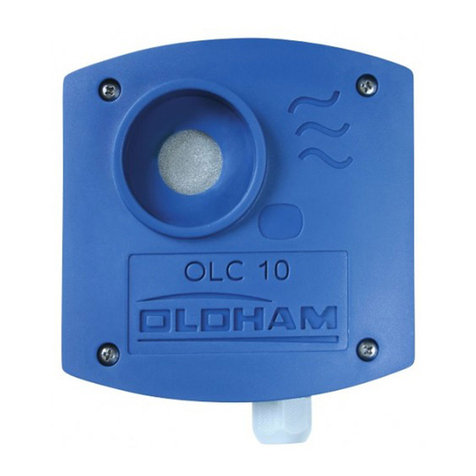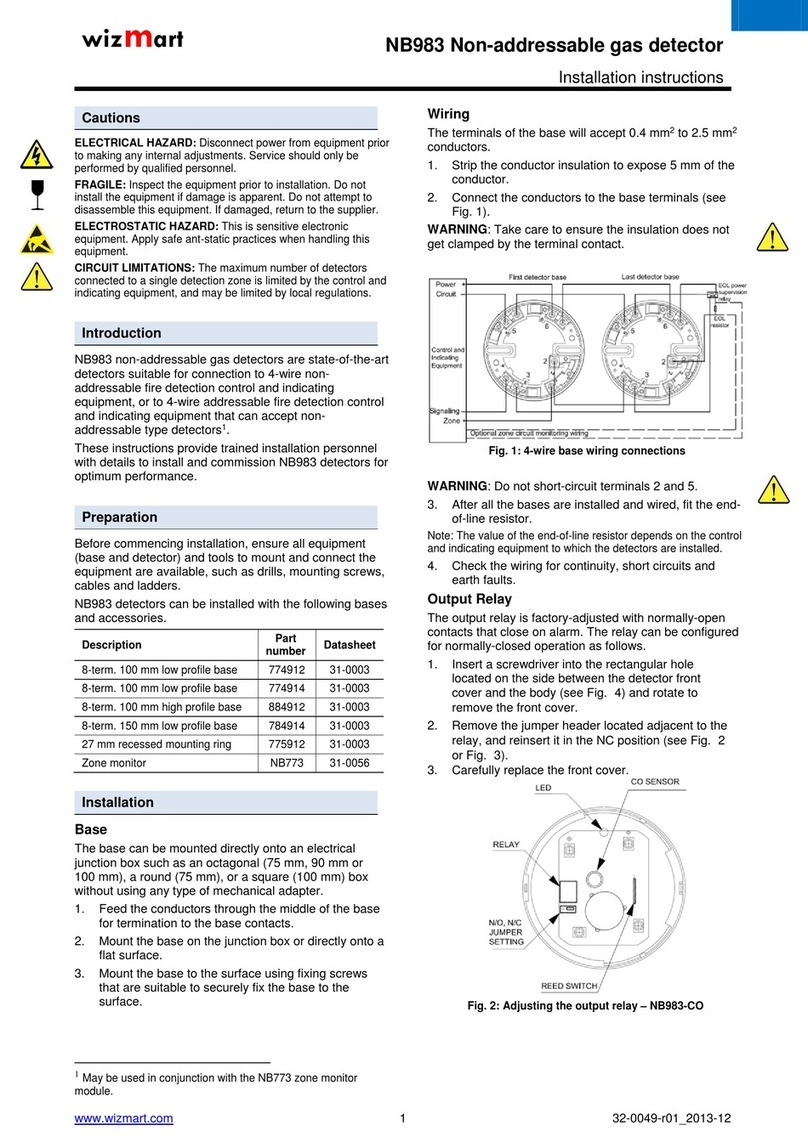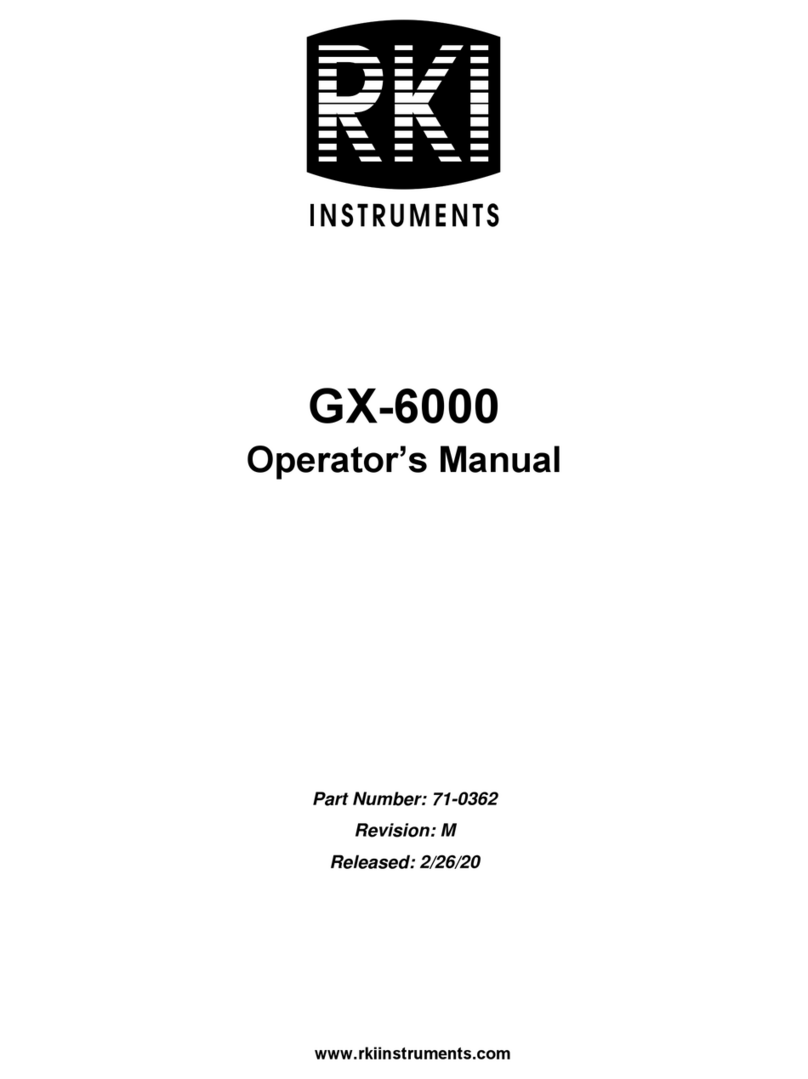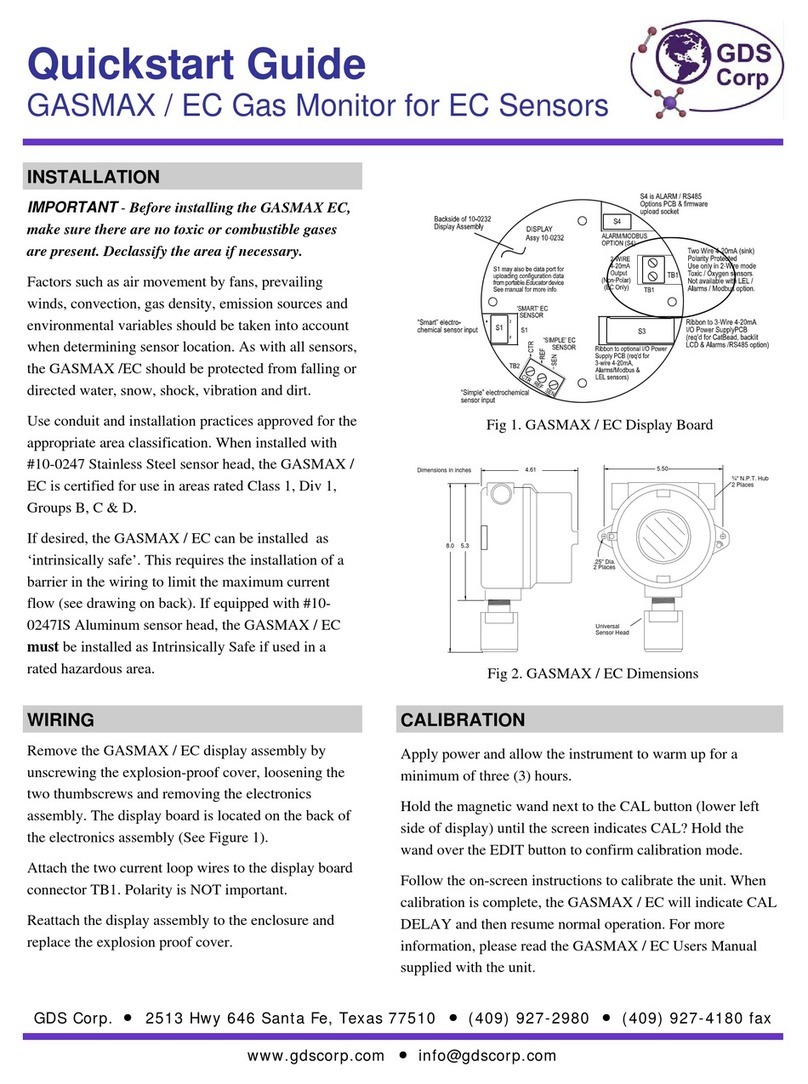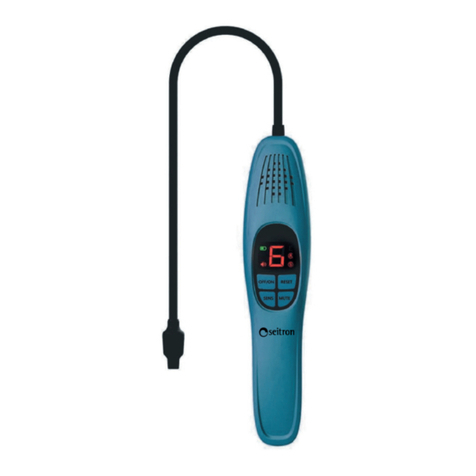This instruction guide details the specification, application and operation of the ESP Safety Inc. SSS-903 with an included
sensor. The SSS-903 System consists of two components, a receiver and gas specific sensor that have been factory
configured and calibrated to provide detection of toxic, flammable and combustible gases in open or closed environments. The product
includes multiple features required to report alarms when the toxic gas concentrations in the environment
reach three independently programmed levels. Each alarm also triggers a relay that is provided as a standard feature,
which can be used to operate warning devices, sirens, valves or switches.
The SSS-903 receiver is a versatile product that can be used in a specific proximity or in a decoupled mode with the sensor
and receiver head located up to 500 feet apart. Furthermore, any SSS-903 can be reconfigured in the field to detect toxic
gases using optional sensor replacements.
The SSS-903 system is recommended for applications that require a gas detector with localized digital readout of detected
gas levels. It comes factory standard for with Analog 4-20mA output with embedded HART, an independent HART connector
that is conveniently located on the SSS-903 enclosure able, relay contacts, and Modbus RS485. The system is comprised of an
SSS-903 Receiver and plug-in universal PGU sensors for electrochemical (PGU-E) , infrared (PGU-IR) ,photo-ionized (PGU-P) and
catalytic bead (PGU-C)detection. Power is supplied from an external 24 VDC nominal power source (source can range 18-3VDC). In
operation the
SSS-903 system has been designed for operation in temperature ranges from minus 40 to 75 °С (without internal heated option
activation) and minus 60 to 75 °С (with activated internal heated option) and relative humidity of up to 100 % (non-condensing)
The SSS-903 receiver includes 5 LED annunciators plus an easily readable LCD display. On the display an operator can determine
information of alarm status, gas detected, current level detected and view a Time Weighted Average (TWA) run time graphic
showing each event and level detected during a user programmed time from 3 to 30 minutes. The design of the SSS-903 is an
approved product for use in control monitoring of gas contamination levels with flammable and toxic gases present in the
working area environment of oil, gas and chemical industries All electronics are enclosed in explosion-proof aluminum or
stainless steel housings that have been certified by FM-Approvals for use in explosive areas pertinent to classes 1 and 2 with the
potential hazard of forming explosive gas mixtures attributed to the subgroup IIС and to explosion hazard categories Т1–Т6,
inclusive of the following zones, premises and facilities:
Non-invasive calibrations can be performed in the field using an included magnetic wand or a HART communicator.
A device descriptor file is available from ESP Safety for use with a HART communicator. Calibration can also be performed with an
included Windows PC application, ESP Commander. Both HART and ESP Commander applications can supply real time output of
current operational data plus access a non-volatile memory in the SSS-903 for further diagnostic analysis.










